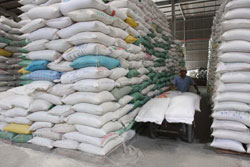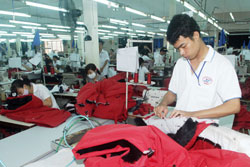Pepper exports likely to dip
Pepper exports likely to dip
The Ministry of Agriculture and Rural Development has revised its forecast for Viet Nam's pepper exports this year to about 123,500 tonnes, more than previously forecast, and earning the country US$894 million in turnover.
With the ministry's forecast, the country's pepper exports were expected to register a 22 per cent year-on-year increase in value despite equalling the previous forecast in terms of volume.
The ministry attributed its revised prediction to limited global supplies of pepper, rising prices of the product. That would create more favourable conditions for Viet Nam to further expand its pepper exports.
The International Pepper Community (IPC) previously forecast the world market would likely see a shortage of 51,000 tonnes of pepper this year. Though, Viet Nam and India, the two largest pepper producers in the world, have finished harvesting the 2011-12 crop while two others, Sri Lanka and Indonesia, have started their main crops. That means world pepper prices could still rise.
Surging prices of pepper on the global market have facilitated Viet Nam's exports. During the first five months of this year, the country's exports saw annual increases of 47 per cent in value to $424 million and 15 per cent in volume to 15,000 tonnes.
During the period, the US remained the largest importer of Vietnamese pepper, accounting for 12.8 per cent of the country's pepper export volume. It was followed by Germany and the Netherlands.
The ministry wants to expand the country's pepper crop to 150,000ha with annual exports of $1 billion by 2015.
The Viet Nam Pepper Association has said the country needs a comprehensive strategy to add value to pepper products to achieve ambitious targets. The strategy will have to focus on encouraging pepper producers to invest in processing technologies to add value and build brand names for Vietnamese pepper products.
vietnamnews























